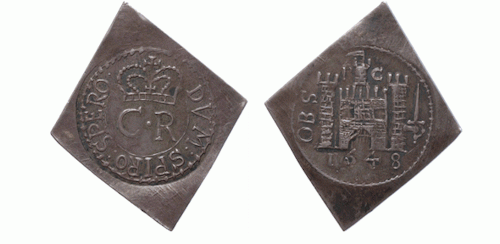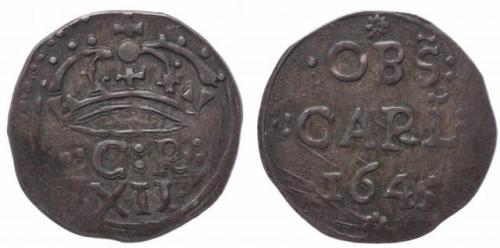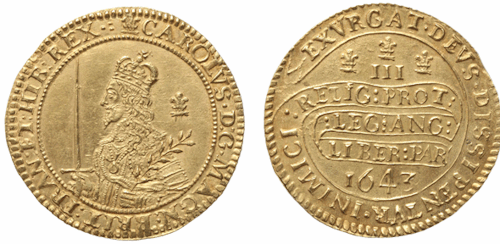boneandpapyrus:A unique display at the Fitzwilliam Museum tells the centuries-old story of emergency
boneandpapyrus:A unique display at the Fitzwilliam Museum tells the centuries-old story of emergency currency made from gold, silver and compressed prayer books.[Dec 2017] In the tumultuous upheaval of the English Civil War, Royalist castles under siege used ‘pop-up’ mints to make coins to pay their soldiers. We’re used to the kind of circular coins that jangle in your pocket. But this one is lozenge-shaped and features a crude impression of a castle on its face. Its edges are sharp.A silver shilling piece, it was made in 1648 during the bloody siege of Pontefract Castle. Today it’s one of 80 examples of currency on display at the Fitzwilliam Museum. The temporary exhibition – Currencies of Conflict – is thought to be the first dedicated exclusively to emergency money.The focus is on coinage that reflects the turmoil of the English Civil War. But the exhibition also sets these coins within a wider context of 2,500 years of history and features some rarely shown items from the Fitzwilliam’s outstanding collection.Between 1644 and 1649, the Royalist stronghold of Pontefract Castle was besieged three times by the Parliamentary forces led by Oliver Cromwell. Royalists loyal to King Charles I also held out at Carlisle, Newark and Scarborough Castles. All eventually fell to the Parliamentarians.Examples of siege coinage from all four castles appear in the display. These coins were made by craftsmen working within the fortress walls, using metal obtained from melting down objects requisitioned from the occupants of the castle and town.People, and especially soldiers, had to be paid to ensure their continued loyalty. “We don’t know how many emergency coins were made during these sieges but a contemporary journal entry from Carlisle suggests that £323 of shilling pieces were struck from requisitioned plate. They show how a micro-economy developed during times of siege,” said curator Richard Kelleher.Although the quality and weight of the silver, and (rarely) gold, was generally good, the manufacture was often much less sophisticated. In temporary mints, pieces of metal were stamped with ‘dies’ of varied workmanship, from the crude designs at Carlisle to the accomplished work of the Newark engraver.“In the emergency conditions of a siege, coins were sometimes diamond-shaped or hexagonal as these shapes were easier to cut to specific weights than conventionally minted coins which required the specialist machinery of the mint,” said Kelleher.In the medieval period, numerous mints operated across England but by 1558 there was only one royal mint and it was in the Tower of London. During the Civil War, Charles I moved his court to Oxford, establishing a mint in the city. A stunning gold ‘triple unite’ (a coin worth £3 – one of the largest value coins ever minted) is an example of the fine workmanship of the Oxford mint.Read More -- source link
Tumblr Blog : boneandpapyrus.tumblr.com


